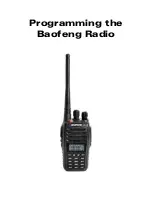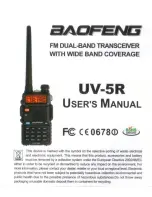
FCC ID: K66FT-857
Operating Manual
Vertex Standard Co., Ltd.
84
CAT (Computer Aided Transceiver) Operation
The FT-857’s CAT System allows the transceiver to be controlled by a personal computer. This allows multiple control
operations to be fully automated as a single mouse click, or it allows a third-party software package (such as contest
logging software) to communicate with the FT-857 without (redundant) operator intervention.
The Optional CAT Interface Cable CT-62 is a connection cable for the FT-857 and your computer. The CT-62 has a
built-in level converter, allowing direct connection from the rear panel CAT/LINEAR jack to the serial port of your
computer, without the need for an external RS-232C level converter box.
Vertex Standard does not produce CAT System operating software, due to the wide variety of personal computers,
operating systems, and applications in use today.
The information presented in this section will allow the programmer to understand the command structure and opcodes
used in the FT-857’s CAT System.
CAT Data Protocol
All commands sent from the computer to the transceiver consist of five-byte blocks, with up to 200 ms between each byte.
The last byte in each block is the instruction opcode, while the first four bytes of each block are arguments (either
parameters for that instruction, or dummy values required to pad the block out to five bytes). Each byte consists of 1 start
bit, 8 data bits, no parity bit, and two stop bits.
There are 17 instruction opcodes for the FT-857, listed in the chart on next page. Many of these opcodes are On/Off
toggle commands for the same action (e.g. “PTT On” and “PTT Off”) Most of these commands require some parameter or
parameters to be set. Irrespective of the number of parameters present, every Command Block sent must consist of five
bytes.
Accordingly, any CAT control program must construct the five-byte block by selecting the appropriate instruction opcode,
organizing the parameters as needed, and providing unused “dummy” argument bytes to pad the block to its required five-
byte length (the dummy bytes can contain any value). The resulting five bytes are then sent, opcode last, from the
computer to the FT-857 CPU via the computer’s serial port and the transceiver’s CAT/LINEAR jack.
All CAT data values are hexadecimal
Constructing and Sending CAT Commands
Example #1: Set the VFO frequency to 439.70 MHz
ρ
Per the CAT command table, the opcode for “Set Frequency” is 01. Placing the opcode into the 5th data bit position,
we then enter the frequency into the first four data bit positions:
DATA 1 DATA 2 DATA 3 DATA 4 DATA 5
43
97
00
00
01
Parameter
Command







































